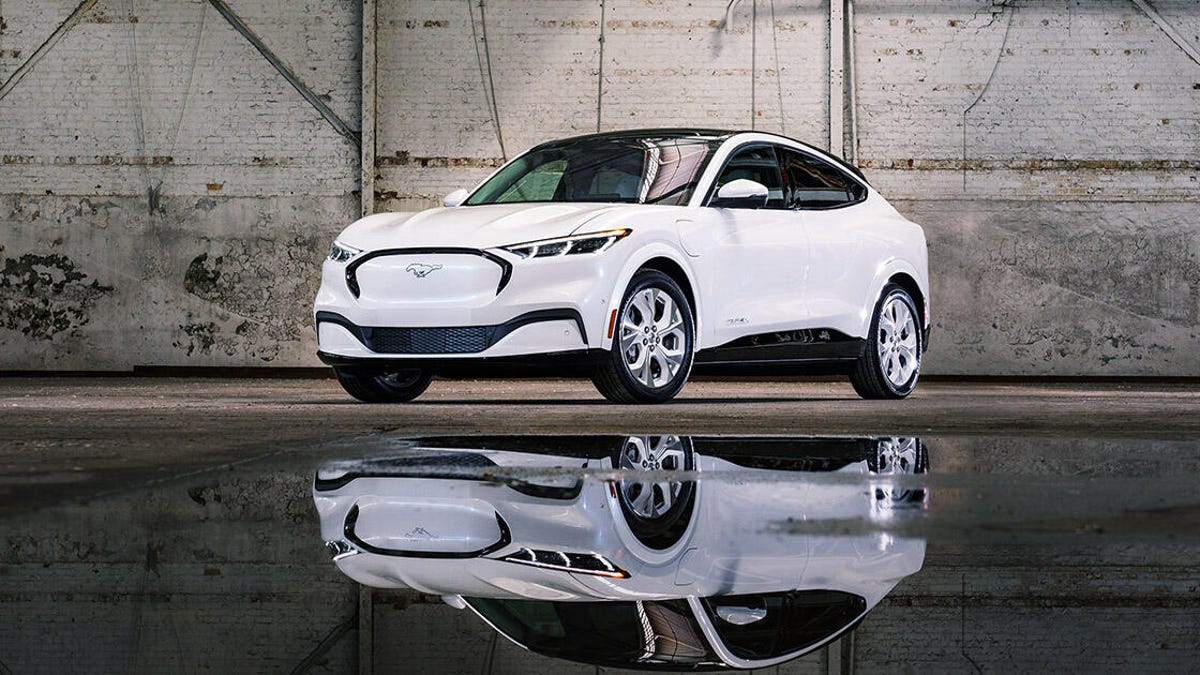Owners of Ford electric trucks and SUVs will soon have easy access to the more than 12,000 Tesla V3 Superchargers in the US and Canada thanks to a partnership between the two automakers announced today. Starting in early 2024, the Tesla Supercharger network will become accessible through Ford’s BlueOval Charge network via a hardware adapter and, beginning in 2025, Ford’s next-generation EVs will have Tesla’s charging port built-in.
The BlueOval Charge network is Ford’s aggregation of partnered EV charging providers that customers can search and access via their onboard route planning software, the FordPass mobile app or other methods. Ford boasts access to more than 10,000 DC fast charging stations — on networks including Electrify America, EVgo, ChargePoint and others — which will soon be joined by Tesla’s 12,000-plus Supercharging points.
Drivers will connect to the V3 Superchargers via a Tesla-developed hardware adapter that converts Tesla’s North American Charging Standard (NACS) cable to the Combined Charging System (CCS) port that comes standard on the F-150 Lightning, Mustang Mach-E and E-Transit EVs. Charger activation and payment will then be handled via the FordPass app or Ford’s Pro Intelligence onboard EV software.
Read more: Best Electric Cars and EVs for 2023
Starting in 2025, Ford will build EVs that feature Tesla’s NACS port built-in.
Starting in 2025, Ford’s second generation of EVs will feature built-in NACS charging ports — presumably alongside the familiar CCS connection. Ford’s adoption of the open-source charging standard will eliminate the need for an adapter to juice up at Tesla Supercharger stations.
On one hand, the fact that the North American electric vehicle charging ecosystem is still split between the CCS and NACS standards feels a bit backwards. Now that the ChaDeMo standard is on the way out and with the European Union settling on the CCS standard long ago, it seemed like we were on track for a single port to rule them all. Viewed in this light, Ford’s endorsement of dual charging systems can be seen as a step in the wrong direction that could confuse new EV buyers.
On the other hand, Tesla operates arguably the largest, most widespread and, importantly, the most reliable charging network in America. Tesla is also the largest EV manufacturer in the world, so if there’s an argument to be made for who’s winning the charging standard war, it’s Tesla. Ford’s partnership with Tesla is a smart move, providing a big benefit to its customers for the small cost of a hardware adapter. Plus, if there’s room in new vehicles’ designs for both ports — and why wouldn’t there be given NACS’ compact design? — then offering both connections in the future feels like a win-win for customers and for Ford.
“The Tesla Supercharger network has excellent reliability and the NACS plug is smaller and lighter,” said Marin Gjaja, chief customer officer for Ford’s Model E division. “Overall, this provides a superior experience for customers.”
Tesla also recently promised that it will open at least 3,500 of its Supercharger stations to all EVs by the end of 2024.
Read more: How to Charge Your Non-Tesla EV at a Tesla Supercharger

